Generalfeldmarschall Ritter von Leeb (5.9.1876–29.4.1956) received from Hitler in 1941 and 1943 two monetary gifts totalling RM888,000, which he used in August 1944 to acquire a woodland property of 214 hectares situated north of Passau. It is therefore incorrect to say that he turned down donations. Ueberschär/Vogel, ‘Dienen und Verdienen’, pp. 151–7. Leeb commanded Army Group North during the Russian campaign in 1941. Relieved by Hitler on 6.1.1942, he was not used again. Leeb was firmly opposed to the invasion of France, and was the only Army Group commander prepared to participate in a coup under Halder. When Halder was surprised by Hitler’s change of mind on 5.11.1939 and cancelled the coup preparations, Leeb lost interest and obeyed Hitler’s orders to prepare the attack. Subsequently he had no further contact with the opposition. Peter Hoffmann, ‘Staatsstreich’, pp. 161–5, 175, 179–83, 188f, also Leeb, ‘Tagebuchaufzeichnungen’, esp. pp. 50–4.
Here Sponeck had figured out the motivation of the conspirators, to go through with the coup despite its poor prospects in order to prove that the German resistance movement ‘had dared to take the decisive gamble’ as Henning von Trescow put it. It was not the intention to whitewash the Army morally or the officer corps as a whole, only the conspirators. Fest, ‘Staatsreich’, p. 240.
British propaganda called the Elser attempted assassination ‘a second Reichstag fire’. Haasis, ‘Georg Elser’, p. 56. The ‘Germany reports’ of the SPD exiles show that immediately after the attempt there were suspicions that either Hitler himself, or certain NSDAP circles, were the string-pullers. This was based on the fact that it would not otherwise have been possible to have planned and carried out the action without the Gestapo and SS having known about it (ibid.). The SS came across rumours at a Fulda clerical seminar that attributed the attempt to the Party. The clergymen obtained their information from a Strasbourg transmitter (ibid., p. 61). A few days after the attempt Heinrich Müller assumed that Strasser and the Schwarze Front were behind Elser (ibid., p. 210), a theory advanced by the ‘St Galler Tageblatt’ on 24.11.1939 in an article probably inspired from Germany. Ernst Eggert, a stool pigeon at Sachsenhausen, circulated the rumour at the beginning of 1940 that Elser was an SS man and the attempt had been staged. His reasoning for this was that Elser was receiving such good treatment in custody that he could not possibly be a ‘real’ assassin and at the least had a good relationship with the SS. From his cell at Sachsenhausen Martin Niemöller also espoused this theory; he had heard the rumour before Elser arrived at the camp and maintained the assertion after the war (ibid., p. 214ff). One of Elser’s guards, SS man Walter Usslepp, alleged that Hitler and Himmler had put Elser up to it personally (ibid., p. 222). Many corresponding witness accounts occur in the IfZ archive ZS/A.17.
Ley said in his speech, ‘Degenerate to the marrow, blue-bloodied into idiocy, corruptible to the point of tribulation and cowardly as all low creatures, that is the nobility which the Jew sends forth against National Socialism, puts a bomb in their hands and turns them into murderers and criminals… if reactionaries believed they could raise their heads again, now they will have finally understood that their time has gone for ever. We will make up for that which had previously, perhaps consciously, been overlooked. This scum must be eliminated, exterminated root and branch. It is not sufficient just to seize the culprits and bring them ruthlessly to account – the whole brood must be wiped out. This goes above all for the traitors in Moscow, London and New York. Every German must be made aware that if he sets himself up against Germany at war, in print or by the spoken word, or incites treason by his act, then he and his family must die… whoever betrays us will be exterminated.’ Robert Ley, ‘Gott schütze den Führer’, in ‘Der Angriff’, No. 180, 23.7.1944. Short extracts are reproduced in Conze, ‘Adel und Adeligkeit in Widerstand’, p. 269.
Generalleutnant Hans Graf von Sponeck (12.2.1888–23.7.1944), a cousin of Theodor Graf von Sponeck; CO, 22.Inf.Div., Poland, France and USSR; 22.10.1941 Leader, XXXXII.Armeekorps. Without reference to FHQ, on 29.12.1941 he abandoned the Kertsch Peninsula in the Crimea and was relieved of command two days later. Condemned to death by court martial on 23.1.1942 for ‘negligent disobedience in the field’, the sentence was commuted on 22.2.1942 to six years’ stockade at Germersheim. A petition for remission of the sentence by von Manstein on 20.6.1943 was refused by Hitler. Following 20.7.1944, he was murdered on Himmler’s order.
Reimann was confusing the twin older brothers of Stauffenberg, Alexander and Berthold. The former (15.3.1905–27.1.1964) graduated in Ancient History in 1931 and was Professor Extraordinary at Würzburg from 1936. He was Ordinarius in Ancient History at Strasbourg for a short while in 1942 before his recall to the front. On 20.7.1944 he was serving in Athens as Leutnant (Reserve) with LXVIII.Armeekorps. He had no knowledge of his brother’s activities. Taken into Sippenhaft (detention as a close relative of a traitor) on 30.7.1944, he was shunted between various concentration camps and prisons until the end of the war. His twin brother Marineoberstabsrichter Berthold Graf Schenk von Stauffenberg (15.3.1905–10.8.1944), a Navy judge, was implicated in the plot and hanged. He was one of only three naval officers actively involved in the resistance. The standard work on the Stauffenberg brothers is Peter Hoffmann, ‘Stauffenberg’. See also Hillmann, ‘Der 20 Juli 1944’.
Hitler spoke on 4.8.1944 at FHQ Wolfsschanze to a gathering of Reichsleiters and Gauleiters. The official communiqué of 5.8.1944 stated that the traitors had not only been active in sabotaging the efforts and struggles of the nation since 1941, but since the very seizure of power itself. Domarus, ‘Hitler’, Vol. 2, p. 2138. The text of the speech by Reichs-Commissar in Norway Josef Terboven (23.5.1898–11.5.1945) is not recorded.
Generalleutnant Rudolf Stegmann (6.8.1894–18.6.1944) fell at Briebeque, Normandy as CO, 77.Inf.Div., which he had led since 1.5.1944.
Regarding the Honour Court presided over by von Rundstedt see note 287 287 On Hitler’s order on 2.8.1944, Keitel summoned a session of the Wehrmacht Honour Court under the presidency of von Rundstedt. The other judges were Guderian, General der Infanterie Walter Schroth (3.6.1892–6.10.1944), General der Infanterie Karl Kriebel (26.2.1888–28.11.1961) and Generalleutnant Karl-Wilhelm Specht (22.5.1894–3.12.1953). The latter, who had won the Oak Leaves on the Eastern Front as CO, Inf.Reg.55 in 1941, was Insp.-Gen., Führer-Youth Movement. Generalmajor Ernst Maisel (16.9.1896–16.12.1978) prepared the protocols. Generalleutnant Heinrich Kirchheim deputised for Guderian at two sessions and at the special session for Speidel. The Honour Court was required to decide if officers suspected of complicity in the conspiracy were to be discharged from the Wehrmacht so that they could be tried in the People’s Court, or simply released. It heard no legal argument and relied solely on evidence presented by the RSHA and Gestapo. At the first session on 4.8.1944, 22 principal conspirators involved in the 20.7.1944 coup attempt were expelled from the Wehrmacht, including Generalfeldmarshall von Witzleben and Generaloberst Ludwig Beck. At the four sittings of 4, 14, 24.8.1944 and 14.9.1944, 55 Army officers were discharged from the Wehrmacht and another 29 released on the recommendation of the Honour Court (including Hans Cramer on 24.8.1944 and Alexander von Pfuhlstein on 14.9.1944). Charges against 19 other officers were dropped. At a special session on 4.10.1944, by majority decision Speidel was not dismissed from the Wehrmacht, and his superior officer Rommel was implicated accordingly. Keitel and Specht voted against Speidel. For the Honour Court, see Ueberschär, ‘Stauffenberg’, p. 150f; Reuth, ‘Rommel’, p. 238ff; Domarus, ‘Hitler’, Vol. 2, p. 2137f; and ‘20 Juli 1944’, p. 195ff.
above.
Читать дальше

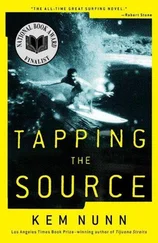
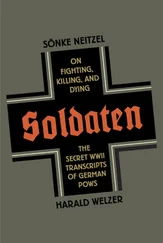

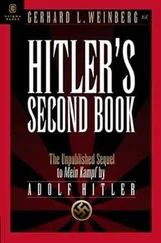
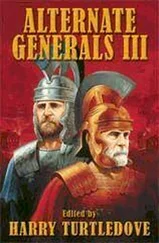
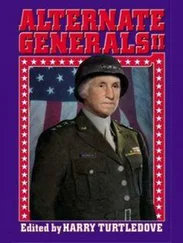

![Traudl Junge - Hitler's Last Secretary - A Firsthand Account of Life with Hitler [aka Until the Final Hour]](/books/416681/traudl-junge-hitler-s-last-secretary-a-firsthand-thumb.webp)



